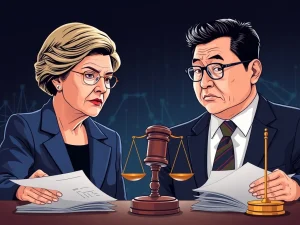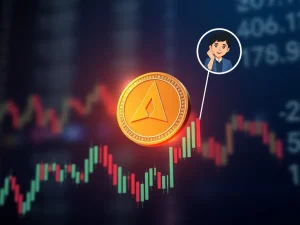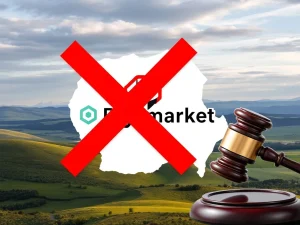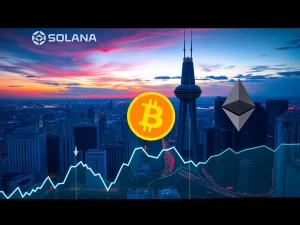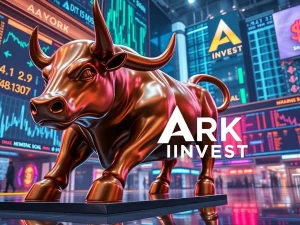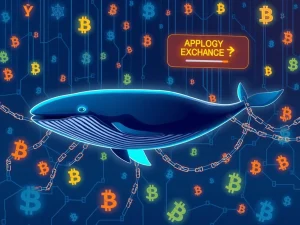Ripple Unleashed: Can XRP Revolutionize Global Payments After SEC Lawsuit?
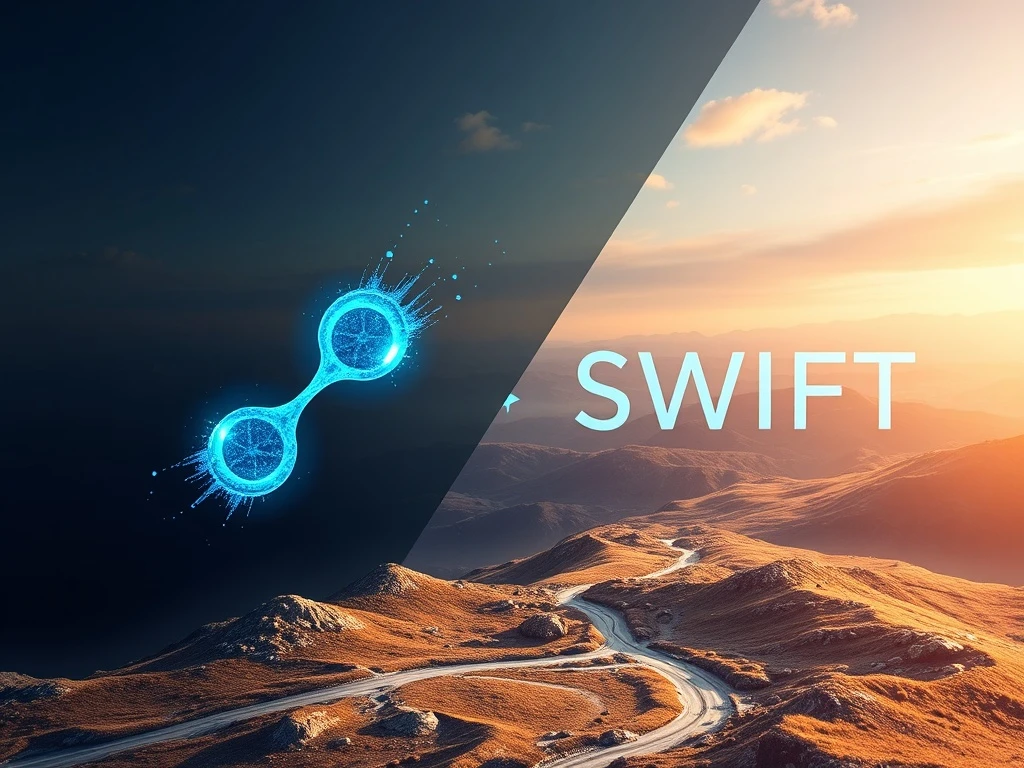
Ripple has finally concluded its lengthy legal battle with the US Securities and Exchange Commission (SEC). This pivotal moment brings much-needed legal clarity for its associated cryptocurrency, XRP. Consequently, many observers now ask a crucial question: can Ripple truly focus on its original ambitious goal? Can it provide a viable, game-changing alternative to SWIFT, the world’s established money transfer system? The stage is now set for a potential revolution in global payments.
SWIFT’s Enduring Legacy in Global Payments
The Society for Worldwide Interbank Financial Telecommunication (SWIFT) has served as the backbone of international money transfers since 1973. For over five decades, it has facilitated trillions in transactions. However, critics increasingly argue that this system is outdated. Many in the blockchain industry, including Ripple CEO Brad Garlinghouse, assert that blockchain technology offers superior throughput and transparency. This makes it a potentially more efficient alternative to SWIFT. SWIFT itself does not send money. Instead, it provides standardized codes and a secure messaging platform. Through this platform, banks coordinate money transfers. A customer initiates a transfer request. Their bank then sends this request to the recipient bank. This request may traverse several other banks within the network. Actual settlement relies on established banking relationships and clearing systems.
SWIFT’s Scale and Its Challenges
SWIFT processes over 53 million messages daily. This covers 40,000 payment routes across 220 countries and over 11,500 institutions. Nevertheless, the system faces significant complaints:
- Transactions can take several days to complete.
- They are often subject to high fees.
- The complex network of bank partners reduces visibility, making tracking transfers difficult.
- Delays and failures occur frequently; SWIFT reported in January 2024 that one in 10 transactions fails, while one in 20 settles late.
The network has undergone upgrades, including ISO 20022. This aims to provide clearer payment data and more transparency by November 25, 2025. Still, many critics label it as “legacy” technology. They point to its reliance on decades-old XML technology.
Ripple’s Technological Edge and XRP’s Potential
SWIFT enjoys the advantage of ubiquity and clear institutional adoption. However, Ripple offers distinct technological benefits. It boasts faster transaction and settlement speeds. It also provides significantly lower costs. In 2018, just before Ripple’s prolonged SEC lawsuit began, Garlinghouse confidently told Bloomberg, “What we’re doing and executing on a day-by-day basis is, in fact, taking over SWIFT.” He highlighted the increasing number of banks and remittance companies adopting the XRP Ledger. The XRP price has also seen substantial growth. It increased by 400% over the last year, according to CoinMarketCap data. This indicates strong market interest. So, with institutional partners signing on and XRP’s market performance, what factors have prevented Ripple’s ledger from truly challenging SWIFT’s dominance in global payments?
The Impact of the SEC Lawsuit on XRP Adoption
Cassie Craddock, Ripple’s managing director for UK and Europe, clarifies Ripple’s approach. She states, “We don’t see blockchain as an opportunity to replace legacy rails. Rather, it’s a way of augmenting and modernizing the existing financial infrastructure.” This approach creates opportunities for greater efficiency and interoperability. Still, scaling to the level of traditional providers involves tackling two key hurdles: usability and regulation. Regarding regulation, Ripple faced a particularly high-profile court case until recently. In December 2020, the SEC, under Chairman Jay Clayton, sued Ripple Labs. The commission alleged that Ripple failed to register its XRP tokens as securities under US law. It claimed the company and its executives raised capital through unregistered securities sales.
Legal Clarity and Global Expansion for XRP
This accusation led to an expensive, multi-year court battle. In 2023, Judge Analisa Torres ruled. She found that programmatic sales of XRP did not require securities registration. However, XRP sales to institutional investors did. The court issued its final $125-million civil penalty to Ripple in August 2024. Both Ripple and the SEC filed respective appeals by October. Yet, following the election of US President Donald Trump and a realignment of the SEC’s priorities for crypto, both parties finally agreed to drop their case in early August 2025. This SEC lawsuit may have hampered XRP adoption within the US. Nevertheless, Ripple secured partnerships with institutions in numerous other jurisdictions globally during the case. Furthermore, the resolution provides XRP with unique legal clarity. Few cryptocurrencies can boast such a distinction.
Overcoming Inertia and Regulatory Hurdles for Global Payments
Legal clarity alone may not be sufficient for Ripple to overtake the world’s largest payments network. Banks themselves must be convinced to fundamentally change their operational methods. Pseudonymous software engineer Vincent Van Code points out the challenges. Platforms utilizing SWIFT “process billions daily, but they are rigid, costly, and deeply siloed.” He explains that a core replacement can take “5–7 years and hundreds of millions of dollars.” This presents an enormous operational risk for banks. Banks typically resist changing their systems because “every bank already ‘speaks SWIFT.’” This makes it the safest, cheapest option for them. Even initiatives like SWIFT GPI are merely patches on a nearly 50-year-old foundation.
Ripple’s Path Forward for Blockchain Payments
Van Code concludes that Ripple must contend with fragile legacy cores. It also faces “uneven” global regulation. Ripple needs to assuage risk-averse banks. Moreover, it must counter perceptions about its underlying token’s liquidity. “SWIFT’s ubiquity is its moat,” he states. “Breaking that network effect will take time.” Craddock emphasizes the need for familiarity. She notes that “institutions need tools that feel familiar.” New regulations, particularly the GENIUS Act, represent a “step toward clear rules.” These rules give institutions confidence to adopt blockchain in a compliant way. Stablecoins like Ripple USD are helping bridge this gap. They are simple to understand. They are pegged 1:1 to the US dollar. They behave like cash in digital form. This familiarity explains why traditional financial players are increasingly comfortable using crypto and blockchain payments technology today.
The Ascendance of Private Payments and Future Outlook
The future of Ripple’s direct challenge to SWIFT remains uncertain. Overcoming entrenched banking practices and less-than-enthusiastic regulators presents a significant hurdle. However, crypto is gaining ground in the US. Lawmakers are creating carveouts for digital assets. These assets can fulfill critical roles within the traditional finance system. Congress has clearly expressed its preference for the proliferation of private stablecoins. This is favored over a digital dollar or a central bank digital currency (CBDC). Congress has not outright banned a CBDC. Yet, it has enacted a law. This law stipulates that only the legislature can create one. It excludes the Federal Reserve or commercial entities. Simultaneously, it passed the GENIUS Act. This act provides clear rules for stablecoin issuers.
A New Era for Ripple and Global Payments
In March, after the SEC dropped its investigation into Ripple, Garlinghouse spoke to Fox News. He declared that “the market opportunity is massive” in the US. He also highlighted the chance to modernize payment systems away from SWIFT. “The Trump effect is profound,” he noted. “You’re gonna see that in the adoption of these [blockchain] technologies.” The path ahead for Ripple is complex. Yet, the confluence of legal clarity, technological advantages, and a shifting regulatory landscape creates a compelling narrative. Ripple and XRP stand poised at a critical juncture. They aim to reshape how money moves across borders, fundamentally impacting global payments for years to come.

